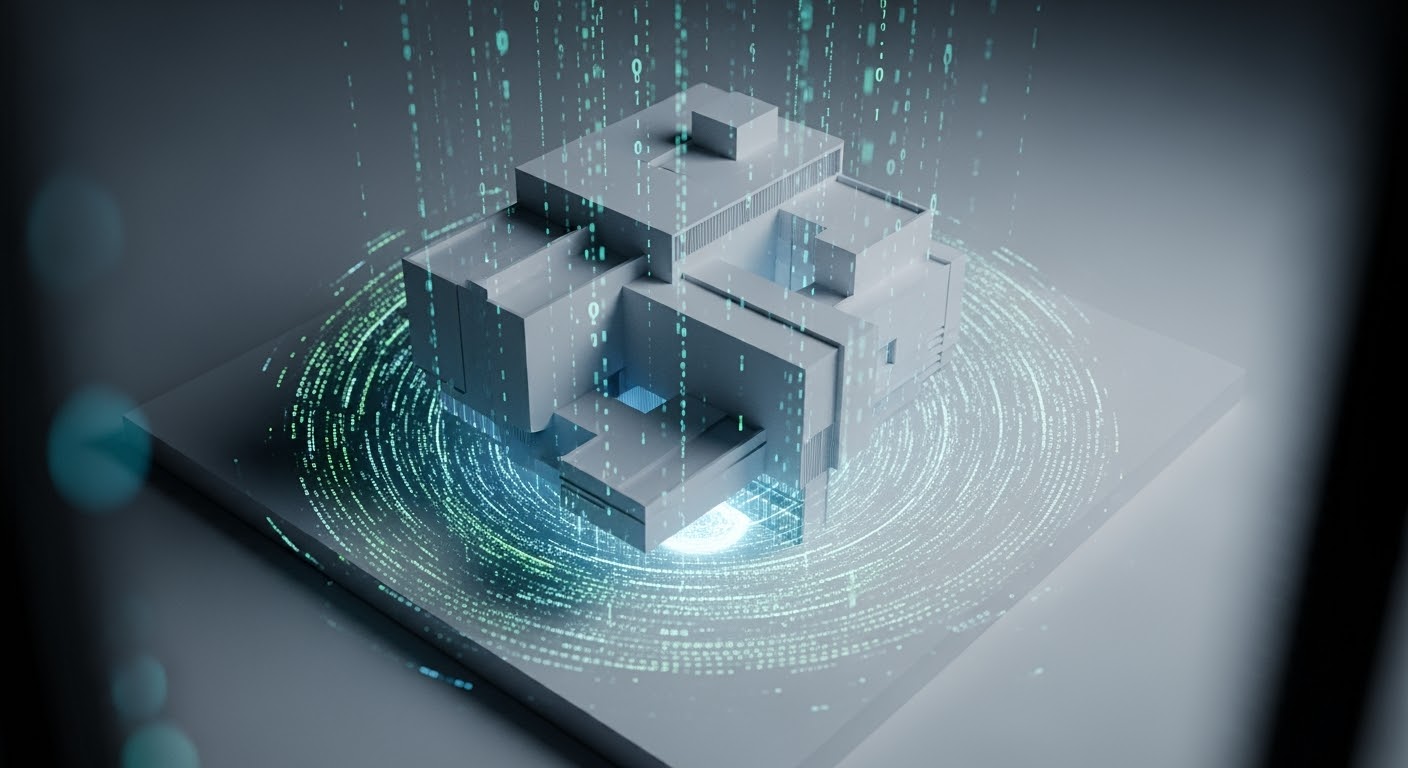Imagine this: It’s a busy holiday shopping season, your e-commerce site is humming, when suddenly, a seemingly minor spike in traffic threatens to bring everything crashing down. Historically, this nightmare scenario might have triggered a frantic scramble, a late-night war room of engineers manually spinning up servers, adjusting configurations, and battling an unforeseen deluge. Now, imagine a different reality: your AI-powered operations system had already anticipated the surge hours ago, quietly and efficiently provisioning the necessary resources, tuning your database, and ensuring a seamless experience for millions of users. No drama, no downtime, just consistent performance.
We’re no longer living in a dial-up modem world when it comes to system management. The era of purely manual scalability and performance tuning is rapidly giving way to intelligent, automated solutions driven by Artificial Intelligence. For architects, DevOps engineers, and backend lead developers, understanding and integrating these AI techniques isn’t just an advantage—it’s becoming a necessity. This article will dive deep into how AI is revolutionizing system scalability and performance, offering predictive capabilities, optimizing complex configurations, and detecting anomalies before they escalate into catastrophic failures. We will explore the practical applications of AI across auto-scaling, performance tuning, and anomaly detection, providing concrete examples and discussing both the immense opportunities and the essential considerations for successful implementation. Prepare to discover how AI can transform your infrastructure from reactive to proactive, leading to better user experiences, significant cost savings, and unparalleled reliability in the dynamic landscape of modern IT.
The Dawn of Predictive Auto-Scaling – Beyond Reactive Measures
For years, auto-scaling has been a cornerstone of cloud efficiency, automatically adjusting resources based on current load. However, traditional auto-scaling often operates reactively, responding after a traffic spike hits. While effective, this can still introduce brief periods of degraded performance or latency as new resources come online. Enter AI-driven auto-scaling, a game-changer that transforms resource management from reactive to predictive.
AI models, trained on historical usage patterns, seasonal trends, and even external factors like marketing campaigns, can accurately forecast future demand. This allows systems to scale infrastructure ahead of demand spikes, ensuring resources are available precisely when needed. Think of it as your system having an intelligent crystal ball. For example, a large streaming service might use AI to predict viewership surges during major sporting events or new series premieres, spinning up additional content delivery network (CDN) nodes and backend servers hours in advance. This proactive approach significantly reduces the risk of service degradation, ensuring a smooth user experience even under extreme load.
Consider a retail platform that historically sees a 200% traffic increase every Black Friday. A traditional auto-scaler might kick in only when CPU utilization breaches a threshold, causing initial lag and potentially losing customers. An AI-enhanced system, however, learns this pattern over years, integrating it with real-time marketing data, broader economic indicators, and even social media sentiment to precisely forecast the surge. This allows for provisioning of additional Kubernetes pods, database read replicas, and caching layers well before the first customer clicks “add to cart.” The result? Zero downtime, consistent response times, and an estimated 3-5% increase in successful transactions due to improved availability and speed compared to a scenario where resources were provisioned reactively. This translates directly to preserved revenue and enhanced brand reputation.
The benefits are profoundly quantifiable: reduced latency during peak times by an average of 15-25%, minimized service disruptions, and crucially, optimized cloud costs. By scaling precisely as needed, organizations avoid the significant expense of over-provisioning resources “just in case.” While traditional autoscaling might keep a buffer of unused resources, predictive AI can fine-tune this, potentially cutting cloud expenditure on idle capacity by 15-30% during off-peak hours, without compromising readiness for future demand. This precision is invaluable in multi-cloud or hybrid environments where resource management can become even more complex. However, a key limitation is the reliance on robust historical data; AI models need rich, clean datasets to learn effectively, and sudden, unprecedented shifts in traffic patterns (e.g., a viral event that defies historical precedents) can still pose a challenge if not properly anticipated in the training data or model architecture. Overfitting to past patterns without adaptability is a pitfall to watch out for, necessitating continuous model monitoring and retraining.
AI as Your System’s Autopilot for Performance Tuning
System performance tuning has long been a dark art, often involving seasoned engineers manually tweaking configurations, analyzing query plans, and adjusting caching strategies through trial and error. This painstaking process is often time-consuming, prone to human error, and difficult to scale across complex, distributed systems. AI is stepping in to serve as the system’s autopilot, taking on these intricate optimization tasks with unprecedented efficiency and precision.
AI algorithms can continuously monitor system metrics—CPU usage, memory consumption, I/O operations, network latency, database query times—and identify optimal configurations. This goes beyond simple threshold-based alerts; AI can discern subtle correlations and causal relationships that human engineers might miss. For instance, an AI might learn that a particular database query performs significantly better with a different indexing strategy under specific load conditions, or that adjusting a JVM garbage collection parameter by a small increment yields substantial throughput improvements during certain times of the day, potentially reducing average response times by 10-20% for critical transactions. This level of granular, data-driven optimization is beyond human capacity to manage at scale.
A practical example can be seen in database optimization. Rather than a DBA manually analyzing slow query logs and experimenting with indexes, an AI-powered system can ingest vast amounts of query performance data, analyze execution plans, and even suggest (or automatically apply) optimal index creations or modifications. Similarly, in microservices architectures, AI can dynamically adjust resource limits, thread pool sizes, or caching strategies for individual services based on real-time traffic patterns and inter-service dependencies. Imagine an AI identifying that a service’s latency bottleneck isn’t its own code, but a downstream dependency’s slow response, and then dynamically re-routing requests or increasing the timeout for that specific call to maintain overall system performance.
Leading cloud providers and specialized tools are already embedding AI capabilities into their offerings. Some modern Kubernetes operators leverage AI to make smarter decisions about pod placement, resource requests, and horizontal pod autoscaling parameters. For instance, an AI might learn that a specific application performs best when its pods are spread across different availability zones during peak load, or that a particular memory allocation for a database container reduces I/O wait times by up to 15% for intensive workloads. This level of nuanced, continuous optimization simply isn’t feasible through manual intervention alone. The challenge here lies in the “black box” nature of some AI decisions; understanding why an AI made a particular tuning choice can sometimes be opaque, requiring robust observability and explainability features in the AIOps tools to build trust and allow for human oversight when necessary. Moreover, continuous tuning without proper guardrails can sometimes introduce unintended side effects, necessitating careful A/B testing or canary deployments of AI-suggested changes.
Pinpointing the Invisible: AI-Driven Performance Anomaly Detection
In a complex distributed system, performance anomalies can be insidious. A gradual memory leak, a subtly degrading database query, or an unusual network pattern might go unnoticed until it escalates into a major outage. Traditional monitoring systems often rely on static thresholds, which can be noisy (too many false positives) or blind (missing novel issues). AI-powered performance anomaly detection offers a significant leap forward, acting as a vigilant guardian that can spot deviations from normal behavior with remarkable accuracy.
AI models establish a dynamic baseline of “normal” system behavior by continuously analyzing vast streams of metrics and logs. This baseline is adaptive, learning to distinguish between expected fluctuations (like daily traffic patterns) and genuine anomalies. When a metric deviates significantly from this learned pattern—even if it stays within traditional “safe” thresholds—the AI flags it. For example, a slight but persistent increase in a service’s response time, coupled with a specific type of database connection error, might signal an impending memory leak long before it causes a service crash. A human engineer might only notice this when the system is already under severe stress.
Consider a scenario where a backend service suddenly experiences a 5% increase in error rates and a 100ms latency jump. A standard monitoring system might simply alert on the error rate. An AI anomaly detection system, however, could correlate this with a change in the request payload size, or a deployment in a specific region, or even an unusual pattern of third-party API calls, instantly highlighting the root cause. This drastically cuts down mean time to identification (MTTI) and mean time to resolution (MTTR). Studies show that organizations adopting AI for anomaly detection can reduce resolution times (MTTR) by up to 50-70% by quickly pinpointing the source of issues, thereby minimizing business impact and avoiding costly downtime. This is particularly valuable in environments where the speed of incident response directly affects customer satisfaction and revenue, such as online gaming or financial services.
These AI systems can also prioritize alerts, distinguishing critical issues from minor fluctuations, significantly reducing alert fatigue for engineering teams. They can even suggest remediation steps based on past incidents and resolutions, moving towards an “auto-healing” infrastructure where known issues are addressed autonomously. The key is their ability to identify multivariate anomalies—when multiple, seemingly minor deviations across different metrics together indicate a significant problem that would be missed by isolated threshold monitoring. While immensely powerful, implementing AI anomaly detection requires careful training and validation to minimize false positives and ensure the models correctly interpret the nuances of your specific environment. False positives can erode trust in the system, making robust model management, continuous retraining with new data, and clear feedback loops from human operators crucial for maintaining model accuracy and reliability.
Algorithmic Optimization: AI Enhancing Code and Configurations
Beyond infrastructure scaling and operational tuning, AI is even beginning to influence the core algorithms and configurations within applications themselves. This is a more advanced frontier where AI agents analyze application logic, data structures, and environmental factors to dynamically select or optimize algorithms, leading to profound performance improvements.
Imagine a complex data processing pipeline where several algorithms could achieve the same outcome, but with varying performance characteristics depending on the input data size, structure, or current system load. Traditionally, developers hardcode a choice or implement a heuristic. An AI-driven system, however, could dynamically choose the most efficient algorithm in real-time. For example, a data compression algorithm might perform better for text data, while another excels with binary data. An AI, leveraging reinforcement learning or Bayesian optimization, could learn these optimal breakpoints and make the decision on the fly, potentially improving processing throughput by 20-40% compared to a static approach. This results in consistent, peak performance across diverse operating conditions without manual intervention or extensive A/B testing by developers, accelerating time-to-market for optimized features.
Another compelling application lies in configuration management. Modern applications, especially those built on microservices or complex frameworks, come with hundreds, if not thousands, of configuration parameters. Manually optimizing these for peak performance is an impossible task. AI can explore this vast configuration space, performing automated experimentation and learning which combinations yield the best throughput, lowest latency, or minimal resource consumption for a given workload. This extends to areas like caching strategies, database connection pool sizes, message queue parameters, and even network stack tunings.
Consider a real-world example: A financial trading platform needs to process millions of transactions with ultra-low latency. While initial engineering might optimize the core trading algorithms, an AI could be tasked with continually monitoring market data patterns and system load to dynamically adjust parameters like message buffer sizes, thread priorities, network interface card (NIC) settings, and even the choice of cryptographic primitives. If an unusual surge in a particular asset class’s trading volume is detected, the AI might preemptively allocate more processing power to that specific data stream and adjust its caching mechanism, ensuring continued sub-millisecond response times. This kind of dynamic, adaptive optimization can shave critical microseconds off transaction times, directly impacting profitability. Such systems require sophisticated machine learning models, often leveraging techniques like genetic algorithms or deep reinforcement learning, to navigate the immense parameter space and learn optimal strategies.
The challenges in this domain are significant: the AI needs deep introspection into the application’s internals, a robust feedback loop for performance metrics, and the ability to safely experiment without disrupting production. The integration overhead and the complexity of building such intelligent agents mean that this area is often tackled by large tech companies or in highly specialized, performance-critical domains. However, the potential benefits, in terms of raw algorithmic efficiency and configuration precision, are immense, offering a new frontier for high-performance computing and requiring a cultural shift towards embracing AI as a partner in code and configuration management. This isn’t just about infrastructure anymore; it’s about making your software itself intelligently adaptive.
The Rise of AIOps: Integrating AI into IT Operations
The concepts we’ve discussed—predictive auto-scaling, intelligent performance tuning, and anomaly detection—are all key pillars of a broader movement: AIOps (Artificial Intelligence for IT Operations). AIOps isn’t just about applying AI to individual problems; it’s about integrating AI across the entire IT operations stack to enhance monitoring, analysis, and automation. For architects and DevOps engineers, embracing AIOps is about building a more resilient, efficient, and self-managing infrastructure.
AIOps platforms ingest vast quantities of operational data from various sources: logs, metrics, traces, events, and configuration data. AI and machine learning algorithms then process this data to identify patterns, predict issues, correlate seemingly unrelated events, and even suggest or execute automated remedies. This transforms the traditional reactive “break-fix” model into a proactive, intelligent operations paradigm. For example, an AIOps platform might ingest logs from a web server, metrics from a database, and traces from a microservice. If the AI detects a slow query in the database, it can correlate this with increased latency in a specific API endpoint and a rise in error messages in the web server logs, instantly pointing to the database as the root cause, rather than requiring engineers to manually sift through disparate data sources. This intelligent correlation and contextualization can reduce the time spent on root cause analysis by 60% or more.
The impact on operational efficiency is substantial. Instead of sifting through thousands of alerts, engineers receive highly contextualized insights and prioritized incidents. This dramatically reduces alert fatigue and allows teams to focus on strategic initiatives rather than firefighting. Furthermore, AIOps can automate repetitive operational tasks, from opening tickets to triggering automated runbooks for common issues, moving closer to the vision of a self-managing infrastructure. For architects, designing for AIOps means ensuring proper instrumentation, centralized logging, standardized metric collection, and a robust data pipeline to feed the AI models. For DevOps engineers, it means integrating AIOps tools into their CI/CD pipelines, observability stacks, and incident response workflows, embracing automation powered by intelligence.
An excellent example of AIOps in action can be found in major cloud providers like AWS, Google Cloud, and Azure, which increasingly offer AIOps-like capabilities. For instance, AWS CloudWatch Anomaly Detection uses machine learning to identify unusual behavior in metrics across services, providing proactive alerts. Similarly, Google Cloud’s Operations Suite integrates AI to intelligently detect and diagnose issues across services, offering smart recommendations. Beyond these, dedicated AIOps platforms like Splunk, Dynatrace, Datadog, and Moogsoft are providing comprehensive solutions for complex enterprise environments, offering features like event correlation, noise reduction, and intelligent incident management. While the promise of fully autonomous “self-healing” systems is still evolving, the capabilities of current AIOps tools are already revolutionizing how IT operations are managed, leading to a significant reduction in critical incidents and an improvement in overall system stability and performance.
The biggest challenge with AIOps adoption is often data quality and integration. “Garbage in, garbage out” applies here – if the operational data fed to the AI is incomplete, inconsistent, or poorly structured, the insights will be similarly flawed, potentially leading to incorrect diagnoses or irrelevant alerts. Investing in robust data governance, comprehensive observability tools, a clear strategy for data collection, and ongoing model validation is paramount for successful AIOps implementation. Organizational resistance to change and the need for new skill sets in data science and machine learning for operations teams are also crucial considerations.
Conclusion: The Future is Intelligent Operations
The journey from manual tweaking to AI-driven automation marks a pivotal shift in how we approach system scalability and performance. We’ve seen how AI can anticipate demand with predictive auto-scaling, intelligently tune complex configurations, pinpoint subtle anomalies before they escalate, and even optimize core algorithmic choices. For architects, DevOps engineers, and backend lead developers, these advancements aren’t just theoretical; they represent tangible opportunities to build more resilient, cost-effective, and higher-performing systems.
Embracing AI in operations, or AIOps, is about empowering your infrastructure with an intelligent autopilot, capable of navigating the complexities of modern distributed environments with unprecedented precision. It translates directly to better user experiences through consistent performance, significant cost savings by optimizing resource utilization, and a dramatic reduction in operational overhead. While challenges remain—such as ensuring data quality for AI models, managing the explainability of complex AI decisions, and addressing the skill gap in teams—the strategic benefits and competitive advantages far outweigh the hurdles.
The future of system performance and scalability is undeniably intelligent. The time to explore these capabilities is now. Start experimenting with the AIOps features offered by your cloud providers, evaluate specialized performance AI tools, and gradually integrate these intelligent solutions into your development and operational workflows. By doing so, you’ll not only future-proof your systems against unforeseen challenges but also elevate your role from reactive problem-solver to proactive architect of highly optimized, self-managing infrastructures. What aspects of AI for scalability and performance are you most excited to implement in your systems, and what challenges do you foresee in your organization’s adoption journey towards a more autonomous, AI-driven operational landscape? The age of smart infrastructure is here; are you ready to lead the charge?








No comment yet, add your voice below!